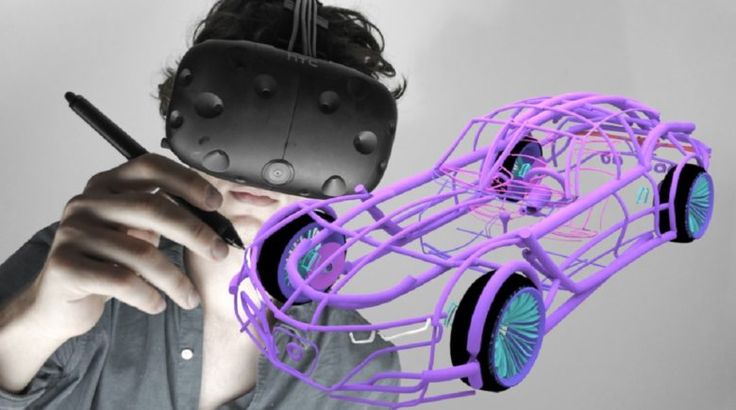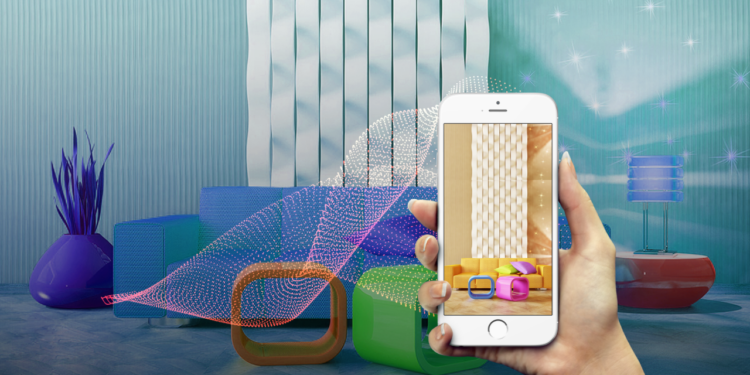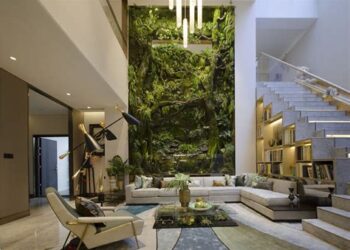The rapid evolution of technology continues to reshape creative industries, and one innovation leading the charge is augmented reality (AR). This breakthrough is transforming traditional design processes, offering designers and architects new methods to visualize ideas and interact with their projects in real time. By overlaying digital content onto the physical world, AR is not only enhancing design tools but also revolutionizing the way creativity is expressed and experienced. In this comprehensive article, we delve into the world of augmented reality in design, explore its applications, discuss its benefits and challenges, and examine future trends that are set to redefine the creative landscape.
Augmented reality has emerged as a game-changing technology in the realm of design. Unlike virtual reality (VR), which immerses users in a completely digital environment, AR integrates digital elements with the real world. This seamless blend allows designers to merge tangible, physical objects with virtual overlays, facilitating a richer, more interactive design process. As digital transformation continues to influence every sector, the design industry is uniquely positioned to benefit from AR, creating opportunities for enhanced visualization, streamlined workflows, and improved client engagement.
The adoption of AR in design tools has spurred a wave of innovation, leading to the development of sophisticated software and hardware solutions that cater specifically to creative professionals. With the ability to manipulate 3D models in real time, test design concepts in real-world environments, and collaborate remotely with precision, AR is poised to become an indispensable asset in the toolkit of modern designers.
Augmented Reality in Design
Augmented reality in design is not merely an add-on feature; it represents a paradigm shift in how projects are conceived, developed, and executed. At its core, AR enhances the user’s ability to interact with digital content within the context of the physical environment. This integration offers several unique advantages:
Key Features of AR in Design
A. Real-Time Visualization:
AR enables designers to project digital models onto real-world settings, providing immediate visual feedback and context. This feature allows for rapid prototyping and iterative adjustments during the creative process.
B. Enhanced Spatial Understanding:
By overlaying virtual elements onto physical spaces, designers gain a better understanding of how their projects will fit into actual environments. This spatial awareness is crucial for projects in architecture, interior design, and product development.
C. Interactive Collaboration:
AR facilitates collaborative work by allowing multiple users to interact with the same digital content simultaneously, even when they are in different locations. This improves communication and decision-making during project development.
D. Seamless Integration:
Modern AR design tools are designed to integrate with popular design software, ensuring that digital assets can be easily imported, modified, and visualized within an augmented context.
How AR Enhances Design Tools
The integration of augmented reality into design tools represents a significant step forward in the creative process. By bridging the gap between the digital and physical worlds, AR enhances design tools in several critical ways:
Improved Conceptualization and Visualization
One of the primary benefits of AR is its ability to transform abstract ideas into tangible experiences. Designers can now overlay virtual models onto real-world environments, allowing them to see how their concepts will look in situ. This capability not only improves the accuracy of design decisions but also helps to identify potential issues early in the process.
A. Contextual Design Review:
Designers can assess how a new piece of furniture might look in an existing room or how a new building facade will interact with the surrounding environment. This contextual review leads to more informed design decisions and reduces the need for costly revisions later on.
B. Real-Time Modifications:
With AR, changes to the design can be made in real time. Whether it is adjusting the dimensions of a digital model or experimenting with different color schemes, the interactive nature of AR ensures that designers can fine-tune their creations on the fly.
C. Enhanced Client Presentations:
AR tools empower designers to create immersive presentations that go beyond traditional 2D renderings. Clients can experience a design concept firsthand, making it easier to understand the vision and provide valuable feedback.
Streamlined Workflow and Increased Efficiency
The traditional design process often involves multiple iterations and extensive communication between stakeholders. AR technology streamlines this workflow by reducing the need for physical prototypes and facilitating more direct interactions with digital models.
A. Faster Iterations:
The ability to quickly modify and visualize designs in a real-world context accelerates the iterative process. Designers can test multiple ideas in a shorter period, leading to faster innovation and improved project outcomes.
B. Remote Collaboration:
In today’s globalized world, teams are often spread across different locations. AR enables remote collaboration by allowing team members to interact with the same augmented model, share insights, and coordinate changes seamlessly.
C. Integration with Existing Software:
Many AR design tools are compatible with popular design programs such as AutoCAD, SketchUp, and Adobe Creative Suite. This integration ensures that designers do not need to overhaul their existing workflows to adopt AR technology.
Enhanced User Experience and Engagement
A compelling user experience is critical in design, whether it involves engaging clients, end-users, or stakeholders. AR provides an interactive platform that captures attention and fosters deeper engagement with the design process.
A. Immersive Experiences:
Augmented reality creates immersive experiences that allow users to interact with design elements in a three-dimensional space. This interactivity makes presentations more engaging and memorable.
B. Intuitive Interactions:
AR design tools are often designed with user-friendly interfaces that simplify complex tasks. This ease of use allows designers to focus on creativity rather than technical challenges.
C. Personalized Design Journeys:
With AR, clients can customize their experience by exploring different design options and configurations. This personalization enhances satisfaction and builds trust between designers and clients.
Applications of AR in Various Design Disciplines
The versatility of augmented reality means it is applicable to a wide range of design disciplines. From architecture and interior design to product design and fashion, AR is creating new possibilities across the board.
Architecture and Urban Planning
In the field of architecture, AR offers an innovative way to visualize buildings and urban spaces before they are constructed. Architects can overlay digital models onto existing landscapes to assess how new structures will fit into their surroundings.
A. Site Analysis:
AR allows architects to conduct comprehensive site analyses by overlaying digital terrain maps and environmental data onto real-world locations.
B. Design Validation:
By visualizing designs in context, architects can validate their concepts against real-world conditions, ensuring that the final construction is both aesthetically pleasing and functionally sound.
C. Stakeholder Engagement:
Interactive AR presentations can help architects communicate their ideas to clients, investors, and community members, facilitating smoother approval processes and stronger community support.
Interior Design and Space Planning
Interior designers benefit immensely from AR by being able to experiment with different layouts, furniture, and decor elements in a real-life setting. This hands-on approach reduces guesswork and enhances the final design outcome.
A. Virtual Staging:
AR tools enable interior designers to virtually stage a room, offering clients a clear picture of how the space will look once the design is complete.
B. Material and Color Testing:
Designers can test various materials, finishes, and color schemes directly on a digital overlay of a room, ensuring that every element complements the overall design.
C. Optimized Space Utilization:
With AR, designers can visualize spatial relationships and optimize the layout to make the most efficient use of available space, improving both functionality and aesthetics.
Product and Industrial Design
Product designers are increasingly turning to AR to enhance the development process. From concept sketches to final prototypes, AR offers a dynamic environment for testing and refining product designs.
A. Rapid Prototyping:
AR accelerates the prototyping phase by allowing designers to create digital models that can be easily modified and tested in various environments.
B. User-Centered Design:
By simulating real-world usage scenarios, AR enables product designers to gather valuable user feedback early in the design process, leading to products that better meet consumer needs.
C. Customization and Personalization:
AR allows consumers to interact with products virtually, exploring different configurations and customizations before making a purchase. This interactive experience drives customer satisfaction and brand loyalty.
Fashion and Apparel Design
The fashion industry is also leveraging AR to transform design and retail experiences. Designers can use AR to experiment with fabrics, patterns, and garment structures, while retailers offer virtual try-on experiences for customers.
A. Virtual Fitting Rooms:
AR-powered virtual fitting rooms let customers try on clothes without physically wearing them, reducing returns and enhancing the shopping experience.
B. Design Experimentation:
Fashion designers can test new styles and fabric combinations in a digital environment, allowing for more creativity and innovation.
C. Interactive Fashion Shows:
Augmented reality is revolutionizing fashion shows by enabling immersive presentations where digital models and interactive elements bring collections to life.
Benefits of AR-Enhanced Design Tools
Augmented reality offers a plethora of benefits that extend beyond improved visualization. Its impact on the design process is multifaceted, addressing both practical and creative challenges.
Increased Accuracy and Precision
AR allows for precise alignment of digital elements with the real world, reducing errors and enhancing the overall quality of design work.
A. Spatial Calibration:
AR systems use advanced sensors and algorithms to ensure that digital overlays align accurately with physical objects, leading to more precise measurements and improved design accuracy.
B. Error Reduction:
By providing real-time feedback and visualization, AR helps designers quickly identify and correct errors before they become costly problems.
C. Enhanced Detailing:
Designers can zoom in and interact with intricate details of a model, ensuring that every aspect of the design is meticulously refined.
Cost and Time Efficiency
The ability to simulate and test designs digitally can lead to significant savings in both time and resources.
A. Reduced Need for Physical Prototypes:
Instead of investing in multiple physical prototypes, designers can use AR to test different design iterations, which minimizes waste and lowers production costs.
B. Faster Decision Making:
Real-time visualization and interactive feedback streamline the decision-making process, accelerating project timelines and allowing for quicker implementation of design changes.
C. Minimized Rework:
Early detection of design issues helps prevent extensive revisions later in the project lifecycle, reducing overall costs and enhancing efficiency.
Enhanced Collaboration and Communication
AR bridges the gap between different stakeholders by creating a common visual language that is easy to understand and interact with.
A. Unified Platform:
AR offers a single platform where designers, engineers, and clients can view and discuss the project, fostering clear communication and a shared vision.
B. Remote Accessibility:
With AR, collaborators can join virtual meetings from anywhere in the world, ensuring that all team members are on the same page regardless of location.
C. Interactive Feedback:
The interactive nature of AR allows for immediate feedback, enabling quick adjustments and continuous improvement throughout the design process.
Boosting Creativity and Innovation
By providing an immersive and interactive design environment, AR encourages experimentation and creativity. Designers are empowered to push the boundaries of conventional design, exploring new ideas and concepts that might otherwise be overlooked.
A. Inspiration Through Immersion:
Experiencing a design in an augmented environment can spark new ideas and creative solutions that traditional methods may not reveal.
B. Risk-Free Experimentation:
AR enables designers to experiment with bold ideas without the risk of costly physical prototypes or irreversible changes.
C. Increased Engagement:
The dynamic, interactive interface of AR tools makes the design process more engaging, fostering a creative mindset and encouraging innovative thinking.
Challenges and Considerations
Despite its numerous advantages, integrating AR into design tools is not without its challenges. Designers and developers must navigate various hurdles to fully realize the potential of AR-enhanced design.
Technical and Integration Issues
A seamless AR experience requires robust technology and careful integration with existing design workflows.
A. Hardware Limitations:
The quality of AR experiences often depends on the capabilities of the hardware used. Outdated or underpowered devices can hinder performance and limit functionality.
B. Software Compatibility:
Integrating AR with established design software can be complex. Ensuring compatibility across different platforms and file formats requires continuous development and support.
C. User Interface Complexity:
As AR tools become more sophisticated, maintaining an intuitive user interface is critical. Complex interfaces can deter adoption and impede the design process.

Data Security and Privacy Concerns
The use of AR involves the collection and processing of significant amounts of data, which raises concerns regarding security and privacy.
A. Data Encryption:
Sensitive design data must be protected through robust encryption methods to prevent unauthorized access.
B. User Consent:
Designers and clients must be aware of how their data is used and stored, ensuring transparency and trust in AR platforms.
C. Compliance with Regulations:
AR developers need to adhere to regional data protection laws and industry standards, adding an extra layer of complexity to software development.
Adoption and Cultural Shifts
For AR-enhanced design tools to be successful, there must be a willingness to adopt new methods and technologies within traditionally conservative industries.
A. Training and Education:
Comprehensive training programs are necessary to help designers transition from conventional tools to AR-based solutions.
B. Change Management:
Organizations must manage the cultural shift associated with digital transformation, ensuring that all team members understand the benefits of AR and are motivated to embrace it.
C. Cost Implications:
While AR can reduce long-term costs, the initial investment in hardware, software, and training can be significant, particularly for small and mid-sized enterprises.
Case Studies: Real-World Applications
Several companies and design studios have successfully integrated augmented reality into their workflows, demonstrating the practical benefits of this technology.
Case Study 1: Architectural Visualization
A leading architectural firm incorporated AR into its design process to create interactive 3D models of proposed structures. By overlaying these models onto actual sites, the firm could showcase their projects to clients in a compelling and immersive manner. The use of AR resulted in:
A. Improved Client Understanding: Clients were able to see the design in context, which led to quicker decision-making and stronger project approvals.
B. Faster Iteration Cycles: Real-time adjustments based on client feedback minimized delays and enhanced overall efficiency.
C. Enhanced Marketing Strategies: The interactive presentations boosted the firm’s reputation as an innovator in architectural design.
Case Study 2: Product Design Innovation
A consumer electronics company leveraged AR to accelerate the development of a new product line. Designers used AR to visualize components and test different configurations virtually. This approach enabled the company to:
A. Reduce Physical Prototyping Costs: Extensive digital testing minimized the need for multiple physical prototypes.
B. Optimize Ergonomics: Virtual simulations allowed for precise adjustments to the product design, ensuring optimal user comfort.
C. Enhance Cross-Department Collaboration: Designers, engineers, and marketing teams worked together on a unified platform, streamlining the development process.
Case Study 3: Interior Design Transformation
An interior design studio implemented AR to revolutionize its client presentations. Using augmented reality, designers could virtually stage rooms and experiment with different decor styles. This led to:
A. Increased Client Engagement: Clients could explore various design options interactively, leading to higher satisfaction levels.
B. Accurate Space Planning: Virtual overlays enabled precise measurements and layout adjustments, ensuring optimal use of space.
C. Faster Project Approvals: The immersive presentation of ideas facilitated quicker consensus among stakeholders.
Future Trends and Innovations in AR for Design
As augmented reality continues to evolve, several trends are emerging that promise to further enhance design tools and methodologies.
Integration with Artificial Intelligence
The fusion of AR and artificial intelligence (AI) is poised to drive the next wave of innovation in design. AI algorithms can analyze vast amounts of data to offer real-time recommendations and optimizations, enhancing the overall design process.
A. Predictive Design Adjustments:
AI can analyze design patterns and user interactions to predict necessary adjustments, ensuring that the final product meets both aesthetic and functional criteria.
B. Automated Error Detection:
Machine learning algorithms can identify potential design flaws early, reducing the risk of costly revisions later in the process.
C. Personalized User Experiences:
AI-powered AR tools can adapt to individual user preferences, offering a more tailored design experience that enhances creativity and productivity.
Advancements in Hardware Technology
Improvements in AR hardware are expected to broaden its application in design.
A. Enhanced Wearable Devices:
Lightweight, high-resolution AR glasses and headsets will allow designers to work more comfortably and efficiently, even during extended sessions.
B. Improved Sensor Accuracy:
Advances in sensor technology will ensure more accurate spatial mapping, resulting in more reliable and realistic augmented overlays.
C. Seamless Integration with IoT:
The convergence of AR with the Internet of Things (IoT) will enable real-time data integration from multiple sources, further enhancing the design process.
Broader Adoption Across Industries
While design remains a primary beneficiary, the principles and tools of AR are expected to spread across various industries, catalyzing innovation in fields such as education, healthcare, and manufacturing.
A. Cross-Disciplinary Collaboration:
As AR becomes more prevalent, designers can collaborate with professionals from other disciplines, leading to holistic and innovative solutions that address complex challenges.
B. Standardization of AR Protocols:
The development of industry standards for AR will facilitate smoother integration across different platforms and devices, making the technology more accessible to a wider audience.
C. Expansion into Consumer Markets:
With the rising popularity of AR applications, consumer-facing products that leverage augmented reality for interactive design experiences are likely to emerge, further democratizing access to advanced design tools.
The Impact on the Creative Process
Augmented reality is not just a technical enhancement—it represents a fundamental shift in how creativity is harnessed and expressed. The immersive nature of AR stimulates creative thinking, breaks down traditional barriers, and opens up new avenues for experimentation.
A. Encouraging Experimentation:
With the ability to test ideas virtually, designers are more inclined to experiment without the fear of failure. This encourages risk-taking and innovation.
B. Expanding Creative Boundaries:
AR tools allow designers to blend physical and digital elements seamlessly, leading to entirely new forms of artistic expression that were previously unimaginable.
C. Fostering Collaborative Creativity:
By providing a shared, interactive space for design, AR fosters an environment where collaborative creativity can thrive. Ideas are exchanged more freely, and diverse perspectives contribute to more robust and innovative solutions.
Educational and Training Implications
The rise of AR in design has profound implications for education and professional training. Design schools and training programs are increasingly incorporating AR technology into their curricula, ensuring that the next generation of designers is well-equipped to leverage these tools.
A. Interactive Learning Environments:
AR creates immersive learning experiences where students can interact with digital models and explore complex concepts in a tangible way.
B. Hands-On Skill Development:
By practicing in a simulated environment, students can hone their skills without the constraints of physical materials, enabling a more flexible and dynamic learning process.
C. Bridging Theory and Practice:
Augmented reality allows educators to demonstrate theoretical concepts in real-world contexts, making abstract ideas more accessible and relevant to students.

Overcoming the Challenges: Strategies and Solutions
While the benefits of AR in design are clear, its successful implementation requires addressing several challenges. Here are some strategies to overcome common obstacles:
A. Invest in Training and Support:
Organizations should prioritize comprehensive training programs to ensure that all users are proficient with AR tools. Continuous technical support and workshops can help ease the transition.
B. Focus on User-Friendly Interfaces:
Developers must work to simplify user interfaces and ensure that AR tools are intuitive. Clear, streamlined interfaces encourage adoption and reduce frustration.
C. Enhance Data Security Protocols:
Investing in robust cybersecurity measures and transparent data policies will build trust among users and safeguard sensitive design data.
D. Develop Scalable Solutions:
Implementing scalable AR platforms that can grow with the organization helps mitigate initial investment challenges and ensures long-term viability.
Conclusion
Augmented reality is redefining the boundaries of design by merging digital innovation with creative expression. Its ability to offer real-time visualization, facilitate collaboration, and enhance the overall efficiency of the design process makes it a critical tool for modern designers. As AR technology continues to advance and become more accessible, its impact on the creative industry will only grow—ushering in an era where the fusion of physical and digital worlds unlocks new realms of possibility.
By embracing AR-enhanced design tools, professionals can achieve higher precision, reduce costs, and foster a more engaging creative environment. The journey to fully integrate augmented reality into design is ongoing, with exciting trends on the horizon, including AI integration and improved hardware capabilities. Despite challenges related to technology integration and data security, the benefits of AR far outweigh the obstacles, paving the way for innovative design practices that are both efficient and inspiring.
As we look to the future, it is clear that augmented reality is more than just a technological trend—it is a transformative force that is reshaping the very nature of design. By adopting AR, designers not only enhance their craft but also contribute to a broader movement toward digital transformation and creative innovation. The next generation of design tools, enriched by augmented reality, promises to deliver experiences that are as immersive as they are practical, setting new standards for excellence in the creative industry.













